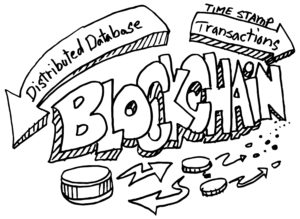
Bitcoin: Building A Better World, Block By Block
Contrary to what people think, bitcoin isn’t made for the bad guys. It’s actually the perfect tool for regulators, investigators, banks and NBFIs like casinos that want an absolute audit trail
The world of financial surveillance is moving into plain sight. As we continue to go down that path of the physical to the digital and the digital to the physical, digital stores of value, whether currency or other assets, will become easier to track and analyze. And no, this does not mean this is a validation of George Orwell’s dystopian novel “Nineteen Eighty-Four”. Ironically, perhaps, for Orwellian supporters, it’s quite the contrary, and is more of a refutation of that all-seeing authoritarian state. Here’s why.
“Follow the money” is and always has been the maxim for investigators, whether in journalism, forensic accounting, counterterrorism or anti-money laundering (AML). Of that last, whether you’re a once green analyst, or a leading consultant in the field of AML, that guiding principle stays strong and true, as does one more fact: The bad guys will continue to refine their craft, and push the boundaries of creativity to hide the source(s) of their ill-gotten gains, and obscure any physical or audit trail.

However, with time, these trails, obscured by money-launderers and other criminals, will no longer be fragmented pieces of data residing on the centralized, siloed servers of financial institutions and non-bank financial institutions (NBFIs). These trails of disconnected digital breadcrumbs, often across multiple categories of NBFIs like money transmitters and casinos, will instead become immutable travel logs on a large map for all to see. In time, investigators will be able to quickly follow the money and document with certainty the source(s) of funds and actors involved.
This might sound like “Nineteen eighty-four”. But think 2008. November 2008 to be more precise, when an unknown individual or group of individuals under the pseudonym “Satoshi Nakamoto” published a whitepaper entitled “Bitcoin: A Peer-to-Peer Electronic Cash System”. That whitepaper, originally posted to an obscure cryptography blog, has since given rise to a burgeoning new sub-sector within the financial services industry.
At its core, however, bitcoin has much less to do with a medium of exchange and more to do with trust and transparency. Trust in a permission-less, decentralized, consensus-based network; transparency in the form of an absolute, unchallengeable record.
That much-heralded technical innovation of bitcoin, known as the “blockchain”, serves as the public ledger of bitcoin transactions. Participants connected to the network can send new transactions for verification, which are then ultimately published on the blockchain for all to see. As an open-source, permission-less platform, anyone with a mobile device and Internet connectivity can review any and all transactions dating back to the first bitcoin transaction.

What’s more, the transactions posted to the blockchain are date and time-stamped and contain the wallet address of both the sender and recipient. Once posted to the blockchain, this data cannot be changed by anyone. The benefits of blockchain from an investigatory perspective should be obvious. It’s the perfect audit trail!
There’s a decent chance you haven’t heard bitcoin and audit trail in the same sentence, and if you have, it probably wasn’t anything positive. After all, the general understanding of bitcoin is that it’s anonymous because one can send and receive bitcoin without sharing any personally identifying information. That’s just not true. Bitcoin, actually, is pseudonymous. This is a feature, not a bug. It allows participants in the system to securely and transparently record their transactions, while offering assurances that funds may be traced using old fashion investigative activities — should the need arise. Follow the money indeed.
Transactions posted to the blockchain offer the investigator certain clues as to identity of parties involved. Wallet addresses may be linked together or traced to individuals and entities such as bitcoin exchanges, online trading platforms, and casinos too, in a not-so-distant future. In fact, it would probably raise some interesting internal questions for organizations like casinos, because of the ability to track “cash” transactions.
When the need arises, parties involved in transactions can be deposed by legal counsel or subpoenaed by law enforcement to produce records of the identity behind the wallet address, lifting the veil of pseudonymity through due process, and without compromising data security, integrity, and crucially, the innocent.
It seems the concept of an open-source network is doing what no one else could do, replacing the patchwork of antiquated centralized systems inside siloed financial institutions, including NBFIs, with an immutable distributed ledger that is available for inspection by anyone, anytime, anywhere. No longer will banks or other non-bank financial institutions have to ask permission via formal written request to share information with each other in order to continue following that proverbial trail of breadcrumbs. Instead, we’re moving to a universally accepted map of transactions open and accessible to all without permission.
Whether bitcoin survives or some other digital currency, government-issued or not, takes its place, is immaterial. The underlying technology is here to stay. Financial transactions and surveillance thereof will be conducted in plain sight — not just by compliance departments and government regulators but also by ordinary citizens, journalists, and other watchdogs.
It’s easy to become territorial as investigators and think that financial transactions and investigations are the domain of governments and institutions. Yes, as compliance professionals, we ought to take the lead in preparing for the realities of distributed ledger technology, and any other innovation within our field for that matter. However, as my colleagues in the regulatory community so often say: “We’re in this together!”
This is about building communities and networks, and is best viewed as a partnership between institutions, regulators, and law enforcement. Will this create a free-for-all with every John and Jane “deputizing” themselves? Perhaps. But how reassuring would it be that more people, organizations and institutions feel vested in maintaining transparency and trust within our financial system.
(The author is an acknowledged expert in building and implementing successful Bank Secrecy Act and Anti-Money Laundering programs for traditional and non-traditional financial institutions that offer a variety of banking products and services)